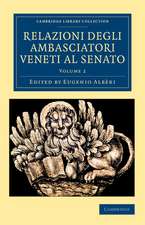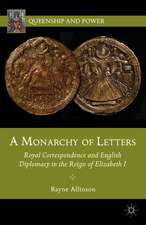Tyburn's Martyrs: Execution in England, 1675-1775
Autor Assistant Professor Andrea McKenzieen Limba Engleză Hardback – 30 sep 2007
The public execution at Tyburn is one of the most evocative and familiar of all eighteenth-century images. Whether it elicits horror or prurient fascination - or both - the Tyburn hanging day has become synonymous with the brutality of a bygone age and a legal system which valued property over human life. But, as this fascinating cultural and social history of the gallows reveals, the early modern execution was far more than just a debased spectator sport. The period between the Restoration and the American Revolution witnessed the rise and fall of a vast body of execution literature - last dying speeches and confessions, criminal trials and biographies - featuring the criminal as an Everyman (or Everywoman) holding up a mirror to the sins of his readers. The popularity of such publications reflected the widespread, and persistent, belief in the gallows as a literal preview of 'God's Tribunal': a sacred space in which solemn oaths, supernatural signs and, above all, courage, could trump the rulings of the secular courts. Here the condemned traitor, "game" highwayman, or model penitent could proclaim not only his or her innocence of a specific crime, but raise larger questions of relative societal guilt and social justice by invoking the disparity between man's justice and God's.
Preț: 443.46 lei
Preț vechi: 690.94 lei
-36% Nou
Puncte Express: 665
Preț estimativ în valută:
84.88€ • 92.23$ • 71.35£
84.88€ • 92.23$ • 71.35£
Carte tipărită la comandă
Livrare economică 21 aprilie-05 mai
Preluare comenzi: 021 569.72.76
Specificații
ISBN-13: 9781847251718
ISBN-10: 1847251714
Pagini: 336
Ilustrații: 8
Dimensiuni: 156 x 234 x 34 mm
Greutate: 0.7 kg
Editura: Bloomsbury Publishing
Colecția Hambledon Continuum
Locul publicării:London, United Kingdom
ISBN-10: 1847251714
Pagini: 336
Ilustrații: 8
Dimensiuni: 156 x 234 x 34 mm
Greutate: 0.7 kg
Editura: Bloomsbury Publishing
Colecția Hambledon Continuum
Locul publicării:London, United Kingdom
Caracteristici
1. Think Tyburn and you think the gibbet. Here is the history of London's killing ground - now situated near Marble Arch.2. Here meet with the highwaymen, bridesgrooms and penitents - all hanged!3. This book has it all - from Newgate prison to Tyburn and God's ultimate judgement.
Cuprins
Acknowledgements and Notes on Sources
Abbreviations
Preface
1. From Newgate to Tyburn: Setting the Stage
Introduction; Discretion and the 'Bloody Code';
The Tyburn Procession and Execution Ritual; Tyburn Fair: Mythology and Histioriography
2. From the Gallows to Grub Street: Last Dying Speeches and Criminal 'Lives'
Introduction;Origins of Printed Last Dying Speeches;Literacy in Early Modern England;The Market for Criminal 'Lives' and Confessions
3. Everyman and the Gallows: Contemporary Explanations for Criminality
Introduction;The Slippery Slope;Nature vs.Nuture;Excuses: Mental Incapacity, Necessity, Gender and Youth; The Decline of the Criminal as 'Everyman'
4. Highwaymen Lives: Social Critique and the Criminal
Introduction; The Robber as a Vehicle for Social Satire;Criminal Celebrities;The Decline of the Haighwayman as a Social Critic
5. The Ordniary's Account: Confession and the Criminal
Introduction;The Ordinary: Question-monger or Plain Dealer?;The Value of a Free and Full Confession;The Decline of the 'Account'
6. Dying Well: Martyrs and Penitents
Introduction;Dying in Charity with all the World;Religion in Newgate: Popular Religious Beliefs and Religious Toleration and Diversity;Methodism and the Decline of the Ordinary's Account
7. Dying Game: Highwaymen and Bridegrooms
Introduction;Dying like a Man;False Courage and Christian Courage;Weddings and Hangings
8. God's Tribunal: Providential Discoveries and Ordeals
Introduction;God's Justice and Man's Justice;Calling God to Witness: Sacred Oaths and Signs;The Meaning of Suffering
Conclusion: The Adjournment of God's Tribunal
2. From the Gallows to Grub Street: Last Dying Speeches and Criminal 'Lives'
Introduction;Origins of Printed Last Dying Speeches;Literacy in Early Modern England;The Market for Criminal 'Lives' and Confessions
3. Everyman and the Gallows: Contemporary Explanations for Criminality
Introduction;The Slippery Slope;Nature vs.Nuture;Excuses: Mental Incapacity, Necessity, Gender and Youth; The Decline of the Criminal as 'Everyman'
4. Highwaymen Lives: Social Critique and the Criminal
Introduction; The Robber as a Vehicle for Social Satire;Criminal Celebrities;The Decline of the Haighwayman as a Social Critic
5. The Ordniary's Account: Confession and the Criminal
Introduction;The Ordinary: Question-monger or Plain Dealer?;The Value of a Free and Full Confession;The Decline of the 'Account'
6. Dying Well: Martyrs and Penitents
Introduction;Dying in Charity with all the World;Religion in Newgate: Popular Religious Beliefs and Religious Toleration and Diversity;Methodism and the Decline of the Ordinary's Account
7. Dying Game: Highwaymen and Bridegrooms
Introduction;Dying like a Man;False Courage and Christian Courage;Weddings and Hangings
8. God's Tribunal: Providential Discoveries and Ordeals
Introduction;God's Justice and Man's Justice;Calling God to Witness: Sacred Oaths and Signs;The Meaning of Suffering
Conclusion: The Adjournment of God's Tribunal
Recenzii
There are useful chapters on dying speeches and criminal biographies, contemporary theories of criminality, the rise of the highwaymen, and the ritual of execution 'to provide a cultural history of the seventeenth- and eighteenth century gallows and the larger belief system underpinning it'(26).














